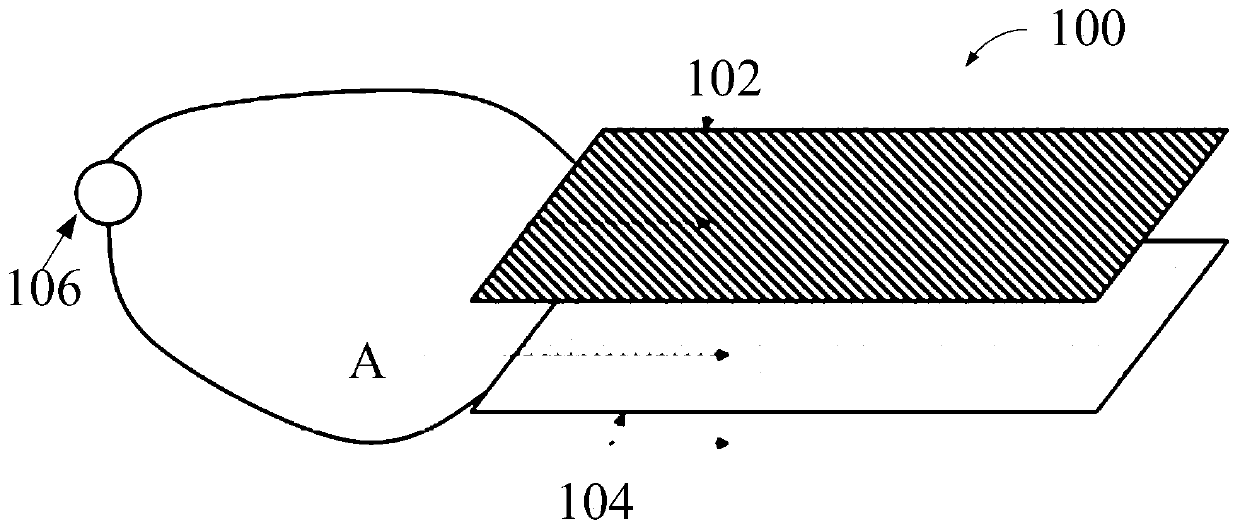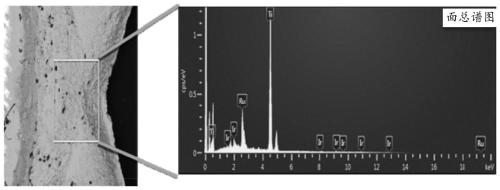Electrolysis device and kitchen appliance
A technology of electrolysis device and kitchen appliance, applied in the field of kitchen appliances, can solve the problems of secondary pollution and the like
- Summary
- Abstract
- Description
- Claims
- Application Information
AI Technical Summary
Problems solved by technology
Method used
Image
Examples
Embodiment 1
[0046] According to one embodiment of the present invention, as figure 1 As shown, an electrolysis device 100 is proposed, comprising: at least one first electrode 102; at least one second electrode 104, the second electrode 104 has a gap with the first electrode 102; a power supply 106, the first power supply of the power supply 106 end is connected with the first electrode 102, the second power supply end of the power supply 106 is connected with the second electrode 104, and the power supply 106 is configured to provide electric energy to the first electrode 102 and the second electrode 104; wherein, the first electrode 102 The manufacturing material includes one or more of antimony metal, ruthenium metal, tin metal, iridium metal, and platinum metal.
[0047] The present invention proposes an electrolysis device 100, specifically, the electrolysis device 100 includes at least one first electrode 102, at least one second electrode 104, and a power supply 106, wherein the se...
Embodiment 2
[0059] In one embodiment, the first electrode 102 is made of ruthenium metal and iridium metal; wherein, the mass percentage of ruthenium metal is greater than or equal to 5% and less than or equal to 30%; the mass percentage of iridium metal is less than or equal to 10%.
[0060] In this embodiment, by limiting the mass percentage of ruthenium metal to be greater than or equal to 5%, it is avoided that the mass percentage of the metal in the first electrode 102 with ruthenium metal as the main metal material is too small to affect the electrolysis effect. The percentage is less than or equal to 30%, wherein, the mass percentage can be understood as the percentage of the current metal mass in the first electrode 102 mass, avoiding the high cost of the electrode device caused by the excessive use of ruthenium metal, through the above-mentioned limitation, in ensuring the electrolysis At the same time, it is convenient to control the production cost; the addition of iridium metal...
Embodiment 3
[0063] In any of the above embodiments, the power supply 106 is a DC power supply, the first power supply end of the power supply 106 is positive, and the second power supply end of the power supply 106 is negative.
[0064] In this embodiment, when the power supply 106 is a DC power supply, stable electrode polarity can be provided to ensure that the electrolytic reaction can continue, thereby ensuring the effect of disinfection and sterilization.
[0065] In any of the above embodiments, the value range of the output voltage of the power supply 106 is greater than or equal to 3 volts and less than or equal to 24 volts.
[0066] In this embodiment, by limiting the value range of the output voltage of the power supply 106 to be greater than or equal to 3 volts, it is avoided that the voltage during the electrolysis process is too low, resulting in less strong oxidizing substances produced by electrolysis, which affects the effectiveness of disinfection and sterilization. effec...
PUM
 Login to View More
Login to View More Abstract
Description
Claims
Application Information
 Login to View More
Login to View More - R&D
- Intellectual Property
- Life Sciences
- Materials
- Tech Scout
- Unparalleled Data Quality
- Higher Quality Content
- 60% Fewer Hallucinations
Browse by: Latest US Patents, China's latest patents, Technical Efficacy Thesaurus, Application Domain, Technology Topic, Popular Technical Reports.
© 2025 PatSnap. All rights reserved.Legal|Privacy policy|Modern Slavery Act Transparency Statement|Sitemap|About US| Contact US: help@patsnap.com



